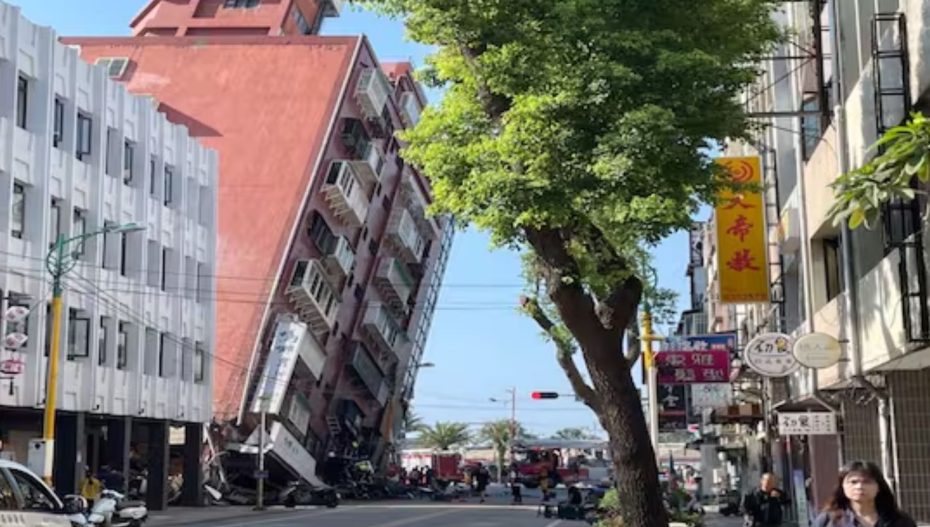Four people died in the 7.4-magnitude earthquake that struck eastern Taiwan on Wednesday morning. The earthquake is the strongest to strike the island in 25 years.
It prompted tsunami warnings for the island as well as parts of southern Japan and the Philippines. The quake hit just before 8:00 am local time, with the United States Geological Survey (USGS) putting the epicentre at 18 km south of Taiwan’s Hualien City, at a depth of 34.8 km.
Media reports said 20 people are trapped in the 26 buildings that have collapsed. Television channels showed buildings at precarious angles in Hualien. Rescue work continues in affected areas. Residents of Taipei, the capital city, felt aftershocks. Taiwan’s central weather administration said 25 aftershocks have been recorded so far.
Tsunami advisory
The Japanese weather agency said small tsunami waves reached parts of southern Okinawa. It issued a warning for tsunami waves as high as three metres for the southern Japanese islands, including the Miyakojima island. Later, this was downgraded to an advisory.
The Philippines Seismology Agency also issued a warning for residents in coastal areas of several provinces, urging them to evacuate to higher ground. The Pacific Tsunami Warning Center in Hawaii later said the risk of damaging tsunami waves had now largely passed.
The earthquake was also felt in the Chinese cities of Shanghai, Fuzhou, Xiamen, Quanzhou and Ningde.
Strict building regulations and disaster awareness seem to have avoided a major calamity in Taiwan. It is regularly hit by earthquakes as it lies near the junction of two tectonic plates. Neighbouring Japan, which lies in a high seismic region, experiences around 1,500 jolts every year.
Also Read: Three Reasons Why Modi’s Claims of the ED’s ‘Independence’ Don’t Hold Water












